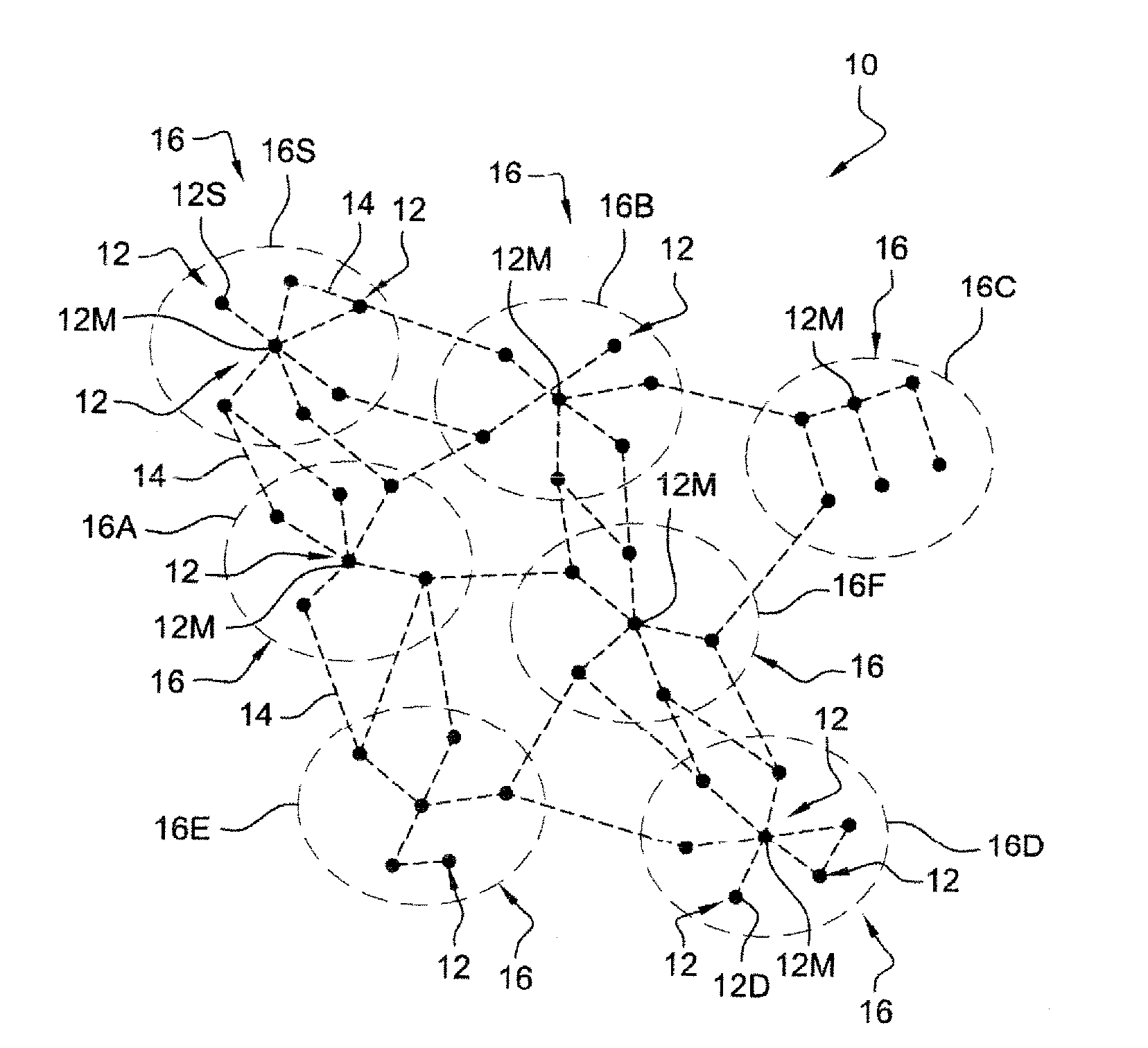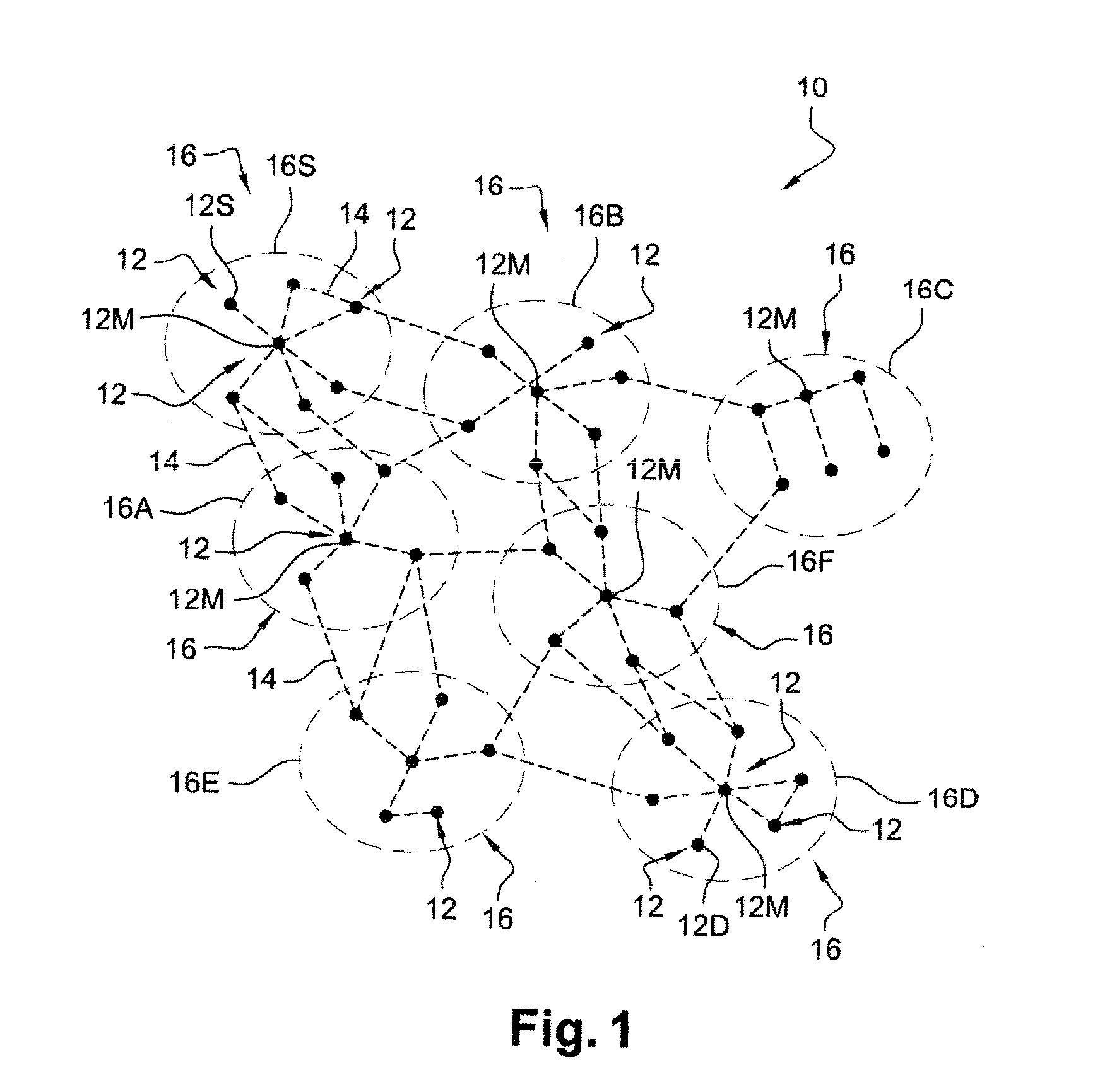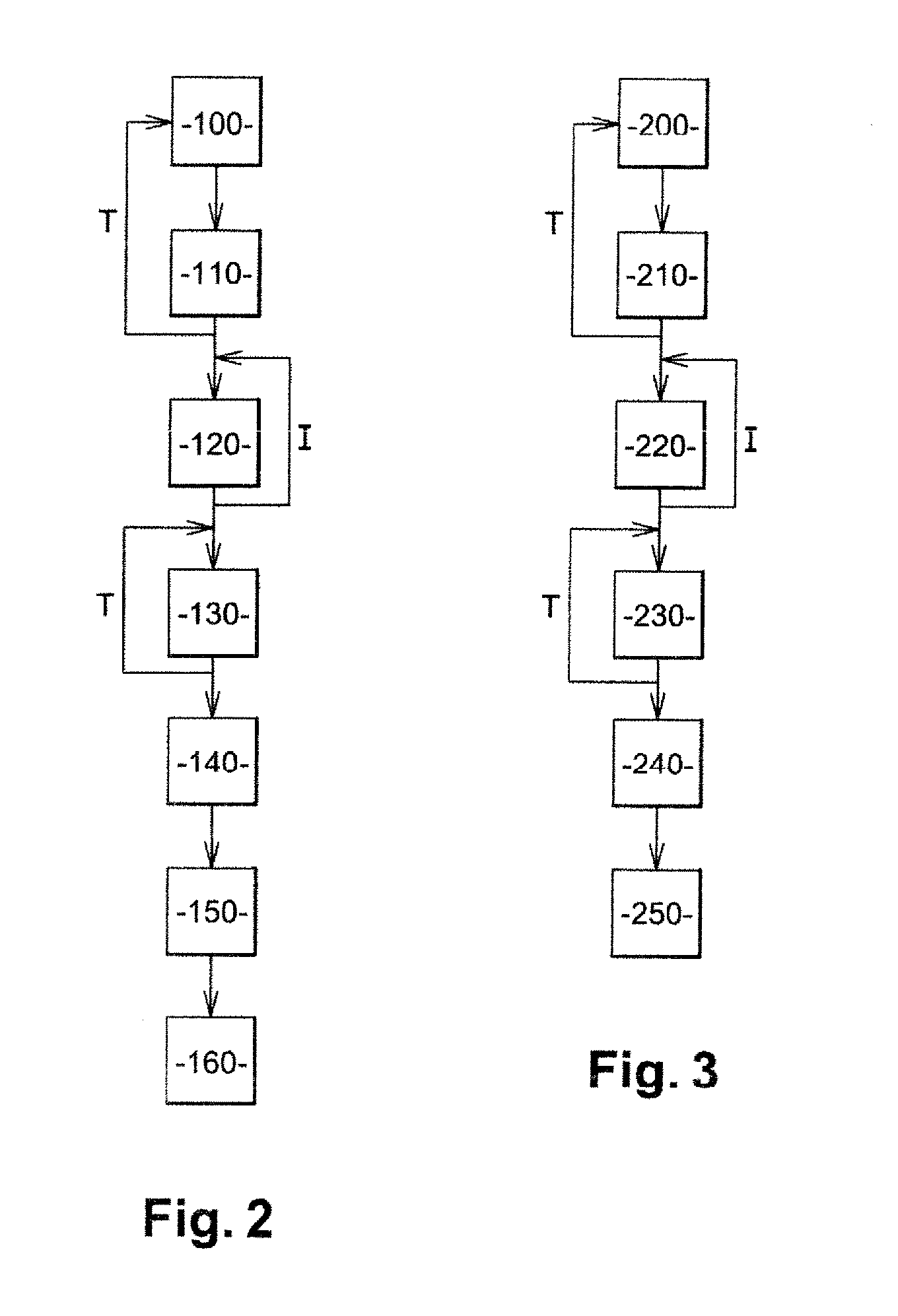Method of routing data in a network comprising nodes organized into clusters
a node and cluster technology, applied in the field of routing data in a network comprising nodes, can solve the problems of difficult estimation of parameters reliably for all nodes of a large-scale ad hoc network, and the complexity of the method is independent, and achieve the effect of good data transmission quality efficiently and reliably
- Summary
- Abstract
- Description
- Claims
- Application Information
AI Technical Summary
Benefits of technology
Problems solved by technology
Method used
Image
Examples
Embodiment Construction
[0039]FIG. 1 represents a network 10 of nodes, for example an ad hoc network.
[0040]The network 10 includes potentially mobile nodes 12, 12M, 12S, 12D interconnected by connections 14.
[0041]In the example represented, the nodes 12 are wireless devices communicating with each other using radio waves, electromagnetic waves, or acoustic waves (such as ultrasound), and sharing a common broadcast channel. For example, the nodes 12 can be mobile terminals such as laptop computers, personal digital assistants (PDA), mobile telephones, etc.
[0042]The connections 14 are generally cables in a standard cable network or virtual connections such as radio connections in a wireless network such as an ad hoc mobile network. In a wireless network, a connection 14 between two nodes indicates that one of the nodes is in the coverage area of the other node, and therefore that the one node can send data to the other node.
[0043]The nodes 12 are conventionally organized into clusters 16, 16S, 16D, 16A, 16B,...
PUM
 Login to View More
Login to View More Abstract
Description
Claims
Application Information
 Login to View More
Login to View More - R&D
- Intellectual Property
- Life Sciences
- Materials
- Tech Scout
- Unparalleled Data Quality
- Higher Quality Content
- 60% Fewer Hallucinations
Browse by: Latest US Patents, China's latest patents, Technical Efficacy Thesaurus, Application Domain, Technology Topic, Popular Technical Reports.
© 2025 PatSnap. All rights reserved.Legal|Privacy policy|Modern Slavery Act Transparency Statement|Sitemap|About US| Contact US: help@patsnap.com



